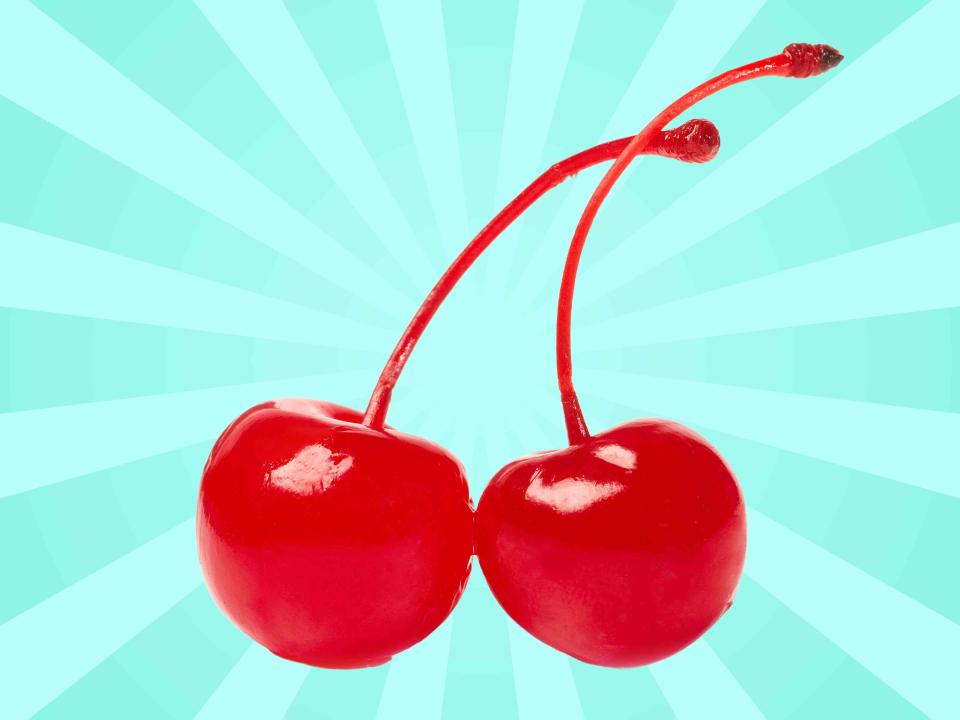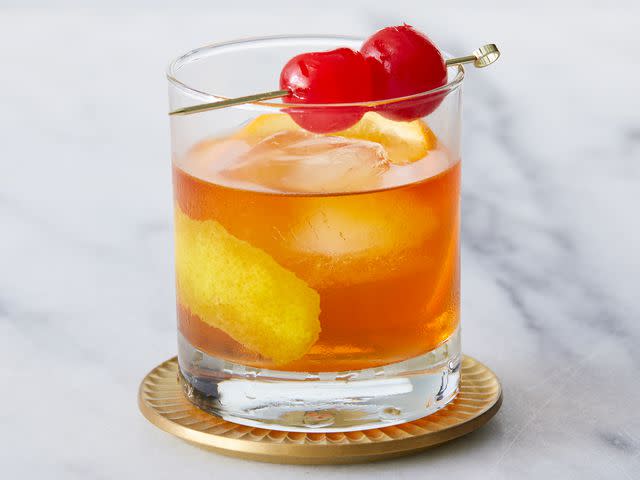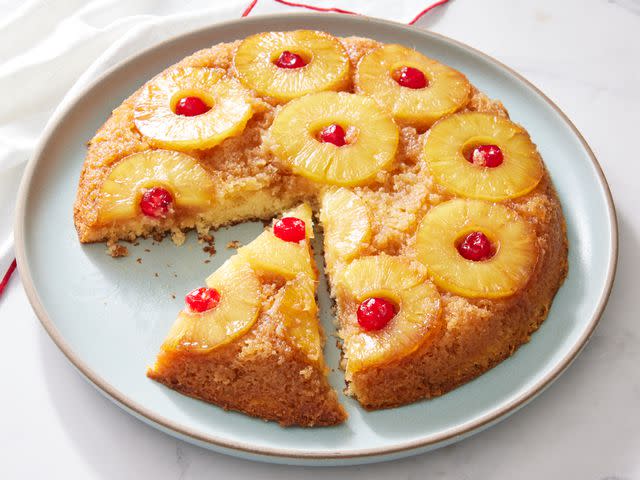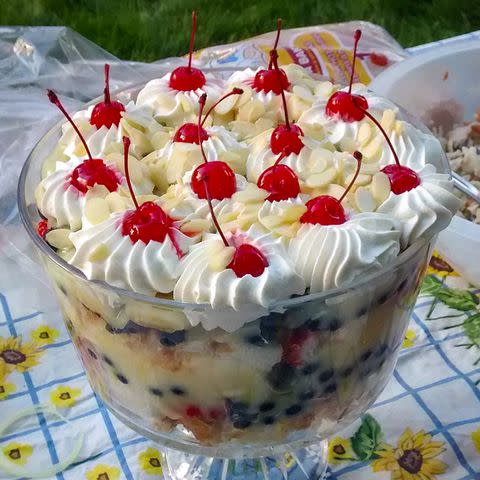What Are Maraschino Cherries and How Are They Made?
Here's what you need to know.

lizzyhayman/Getty Images
If you’ve ever been given a fruitcake at Christmas or gone feral over an ice cream sundae as a child (or an adult, let’s be honest), you’re familiar with the bright red bulbs called maraschino cherries. These little guys dot drinks, adorn cakes, and fill jars in fridges.
In between scarfing a handful or inspecting a baked good full of them, you may be wondering what exactly maraschino cherries are or how you pronounce their name (the answer is mare-uh-sheen-o, by the way). Are they real cherries? And how did they arrive in those jars?

What Are Maraschino Cherries?
These ultra-sweet, generic-tasting, nostalgia bombs are so much more than the near-neon orbs we’ve grown up on. Once upon a time, these cherries were an answer to Prohibition.
At the time, cherries in the United States were mostly imported and the liquid in the jars was booze—specifically maraschino liqueur. But when alcohol was no longer an option and the beloved cherries were banned in the 1920s, an Agricultural College professor in Oregon decided he wanted to help farmers preserve their sweet Royal Anne cherries without the illegal hooch. His name was Ernest H. Wiegand and he developed a process for the cherries we often use today, for everything from milkshakes to cookies.
How Are Maraschino Cherries Made?
In the beginning (well, since the 1800s), sour marasca cherries growing on the Dalmatian coast of Croatia were turned into a delicious cherry liqueur along with their pits, stems, and leaves. This liqueur, aptly titled maraschino liqueur, was then used to preserve cherries after they were brined in sea water. Rich and delicious, with a subtle almond flavor from the pits, these cherries were imported all over the world.
But the combination of the alcohol ban in the U.S. and the cost to import these gorgeous gems revealed a need to create something locally. Professor Wiegand, perhaps taking a cue from Dr. Frankenstein, developed a method akin to reanimation: He took live cherries, killed them, then reanimated them.
Specifically (and less dramatically), the cherries are cured in a brine made of calcium chloride and sulfur dioxide, which is helpful for preservation—but this has the unfortunate side effect of removing all color and flavor from the fruit. Enter sugar syrup for them to soak in. Finally, bright red dye is injected into each cherry. Almond flavor or extract is added as well, in order to more accurately imitate the original variety from Croatia.

Dotdash Meredith Food Studios
Types of Maraschino Cherries
The modern, nearly glowing cherries most commonly seen in kitchens and dive bars or family restaurants (load up that Shirley Temple, ma’am) can be made with any old cherry variety, but they’ll most likely be Royal Ann, Rainier, or Gold cherries. They also come in other flavors and other colors besides red— the entire rainbow, to be exact: orange, yellow, green, blue, and purple.
“Natural” versions are sold without fake color or preservatives and these brands utilize beet or radish juice for color. They will be darker in hue and softer in texture, but no less sweet. Of course, these won’t last as long as their neon counterparts.
Imported varieties rely on an Old World recipe that uses their own juice to preserve the fruit— these retain the natural sourness that the cherry has, making for a more interesting taste experience.
How to Store Maraschino Cherries
The sugar content in maraschino cherries ensures they will last a long time if properly stored. Unopened jars need a cool and dark location like a pantry, away from sunlight. Once open, they can hang out in the fridge for up to a year (tightly sealed and with the syrup still covering the remaining cherries).
Freezing isn’t recommended. This is because they’re so saturated with moisture, they’ll have no choice but to be mushy once thawed.

What to Do With Maraschino Cherries
These cherries taste more like sugar than anything else, so using them to flavor anything isn’t the ticket. Where they shine is as a candy-sweet garnish for Shirley Temples, pina coladas, virgin blended drinks, milkshakes, banana splits, and ice cream sundaes. Whole maraschino cherries are famous for pineapple upside down cakes and halved or chopped cherries often dot the inside of fruit cakes, fruit salads, whipped cream salads, muffins, and pies.
The syrup can also be used to color things, like cake batters or frostings.
The old world or famous Luxardo (original) maraschino cherries are perfect for Manhattans and old fashioneds.
For more delicious inspiration, explore our collection of 15 Ways to Use Maraschino Cherries.
Read the original article on All Recipes.

